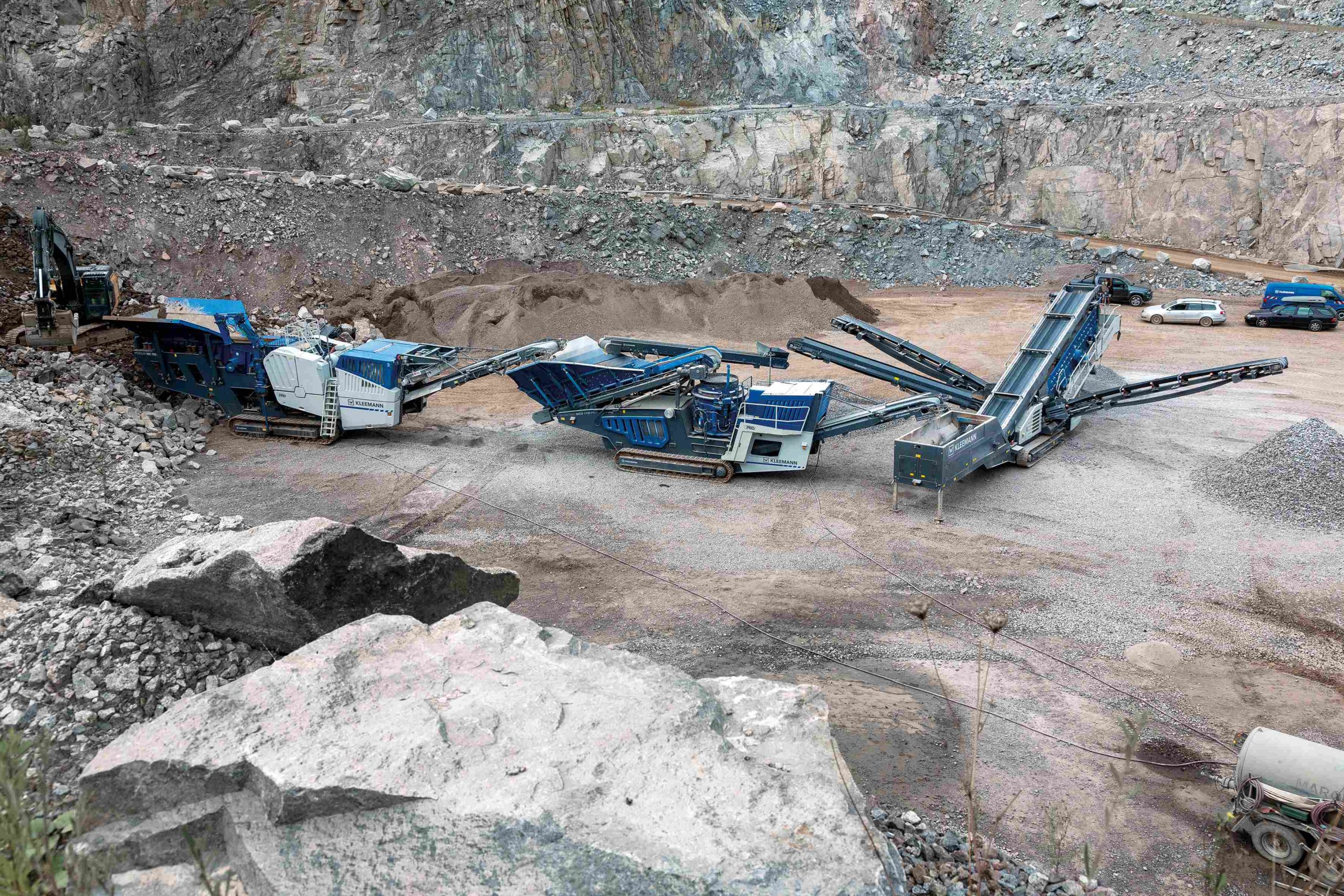Mobile crushing and screening plants that are operated with electricity instead of diesel fuel are regarded as more environmentally friendly because they do not emit CO₂ on site. They are also ahead in terms of cost-effectiveness in the long term.
Sustainable, low-emission solutions are in demand. With electrical mobile plants, companies can position themselves on the market as future-oriented providers. Although the initial investment costs are higher, they are quickly amortised due to the fuel savings. A sample calculation for the German market shows that this is already possible after around six years – if the plant can be supplied with energy via the customer’s own photovoltaic system, even after around four years.
“Our mobile plant train in the sample calculation consists of a jaw crusher MOBICAT MC 120 PRO, cone crusher MOBICONE MCO 110 PRO as a secondary crushing plant and a downstream screen machine MOBISCREEN MSC 953 EVO. The plant train consumes an average of approximately 77 litres of diesel fuel per operating hour. In the electrified version, it has an average power consumption of 302 kW per operating hour. The maximum power requirement is 542 kW,” says Tobias Böckle, head of Product Management at Kleemann.
“The energy requirement must first be met by the infrastructure and, ideally, by electricity from renewable energy sources. The power supply from the company’s own photovoltaic system is sustainable and a very fast cost-efficient solution,” says the expert.
It is crucial for efficient use that the infrastructure is suitably designed in advance. Tobias Möß of Wolff & Müller GmbH, explains: “First of all, the actual energy requirements of the plant and that of all already existing consumers should be determined. How much power is needed on the entire company premises? The load profile must also be taken into account. When are the power peaks, when are the times with lower consumption? The individual load profile can be obtained from the power supplier or network operator.”
Many companies already have a transformer on their premises that adapts the voltage to requirements and, for example, provides low voltage for plants. Once the required power has been calculated, it is necessary to check whether the available transformer is sufficiently dimensioned. Does it deliver the required power? The amount of power that can be drawn from the transformer is indicated on the type plate.
It is also important to consider where the main distribution is located on the site and where the plant will be used. Good planning here is the prerequisite for efficient operation. An example: The electrical energy required to supply the plant is not transformed to low voltage directly at the transfer station, but is instead routed over the medium-voltage level across the site to the plant. The cable cross-section can therefore be much thinner, making the cable more manageable and significantly cheaper. At the mobile plant, a second transformer converts the current into low voltage in order to operate the mobile crushing or screening plant. The aim here is to develop a suitable individual concept.
With a solid foundation, the investment costs are amortised after around six years – or even sooner, depending on the energy concept. From this time on, all-electric operation will save considerable operating costs year after year.
With the diesel-powered plant, there is no need for additional investment in the infrastructure apart from the fuel costs. The cost of diesel fuel varies greatly depending on the country and region, so any savings depend on the difference in price between diesel and electricity.
Electrically operated crushing and screening plants are initially more expensive due to their special equipment, plus the cost of cables (depending on the length of cable required) and a transformer.
All-electric operation incurs initial investment costs, but these pay off for the operating company in the medium term. On closer inspection, the one-off costs quickly turn into a worthwhile investment.
In many cases, climate protection requirements lead to increased demand. The electric drive is a decisive competitive advantage, for example when local authorities demand emission-free operation in city centres. “Especially in combination with your own PV system, electrical operation becomes a climate-friendly, cost-efficient concept in just a few years, which not only provides the operating company with monetary benefits, but also reflects its efforts to achieve greater sustainability,” says a convinced Tobias Böckle.
Environmentally friendly operation is also possible at locations where electricity cannot be supplied due to a lack of infrastructure. The electric version of Kleemann plants can also be operated autonomously with sustainable HVO diesel.
Useful questions before using fully electric plants
- How high is the demand from existing consumers?
- How high is the demand of the new plant?
- How much power is needed on the entire company premises?
- When are the power peaks, when are the times with lower consumption?
- Is my present transformer sufficient?
- Where is the main distribution located on the site and where will the plant be used?





